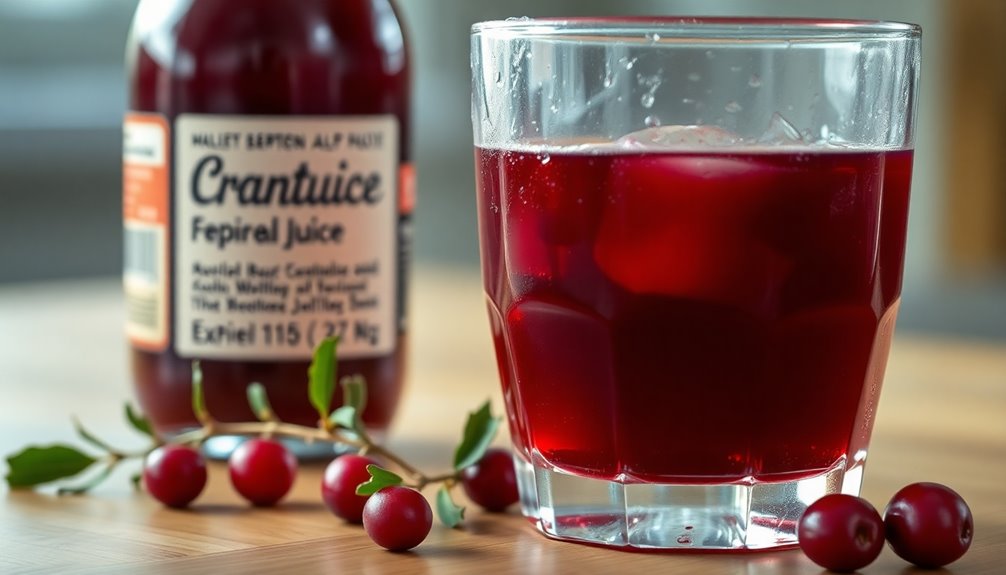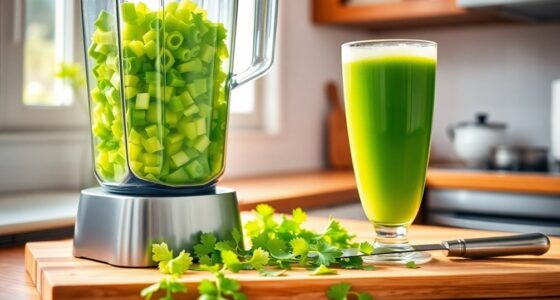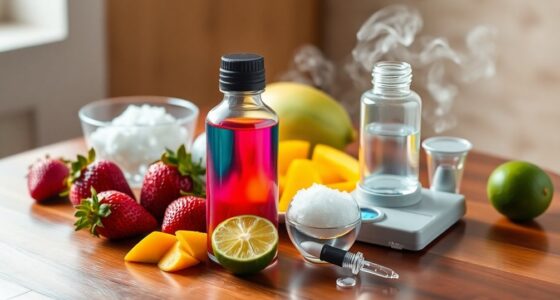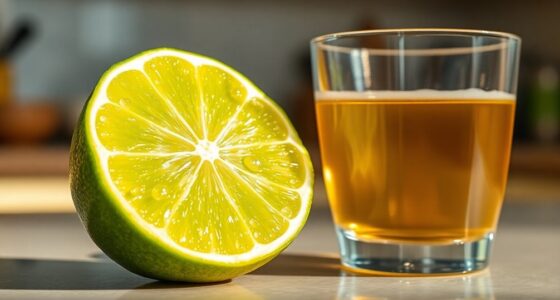Cranberry juice is good for about 8 to 12 days after you open it, as long as you store it properly in the refrigerator. Using an airtight container helps maintain its quality, and it’s best to stick with the original bottle or carton to minimize air exposure. If you’re not able to finish it in time, consider freezing it for a longer shelf life. Keep these tips in mind, and you’ll make the most of your juice! Additionally, always check for any off smells or changes in color before consuming cranberry juice, as these can indicate spoilage. If you’re ever in doubt about its freshness, it’s better to err on the side of caution. So, how long does cranberry juice last in the fridge, you ask? Following these storage tips will ensure it maintains its flavor and quality for the entire duration of its shelf life.
Key Takeaways
- Opened cranberry juice is best consumed within 8 to 12 days when stored in the refrigerator.
- For optimal freshness, store juice in an airtight container, preferably the original bottle or carton.
- Look for signs of spoilage, such as changes in color, unpleasant odors, or mold before consuming.
- It's advisable to finish the juice within three weeks of opening for the best taste and safety.
- Freezing cranberry juice can extend its shelf life up to one year, but texture may change.
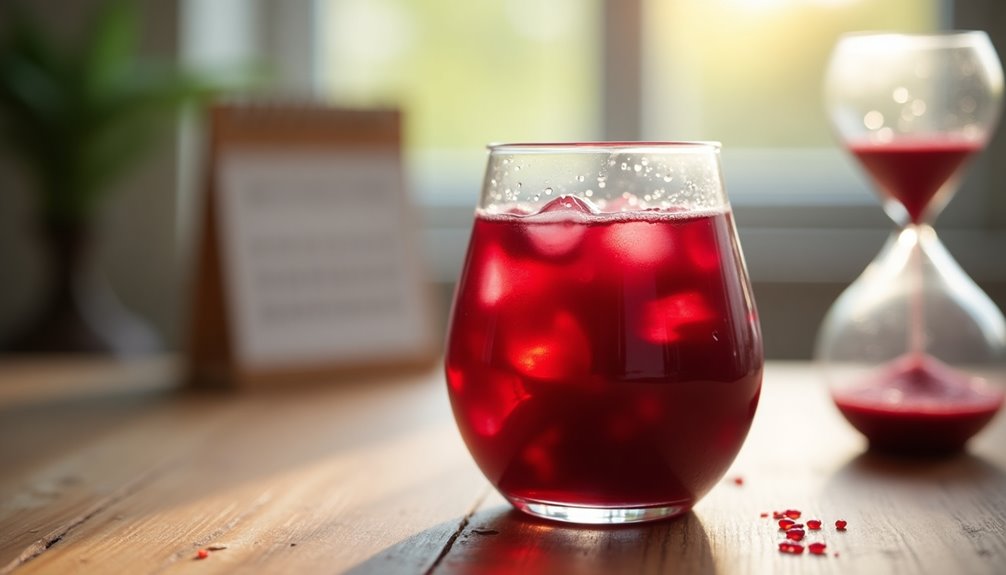
When you open a bottle of cranberry juice, you might wonder how long it stays fresh. Typically, opened cranberry juice lasts about 8 to 12 days when stored properly in the refrigerator. To ensure you get the most out of your juice, it's crucial to keep it in an airtight container. Using the original bottle or carton is ideal, as it's designed to maintain the juice's quality.
If you leave the juice exposed to air, it can lead to spoilage more quickly, diminishing the flavor and safety of your drink. You should always check for signs of spoilage, which are essential indicators that your cranberry juice may no longer be safe to consume. If you notice changes in color, unpleasant odors, or even the presence of mold, it's time to discard the juice.
Trust your senses; they're one of the best tools you have for determining the freshness of your drink. When it comes to enjoying cranberry juice, consuming it within three weeks after opening is strongly recommended. This timeframe not only ensures the best taste but also maximizes safety.
If you find yourself unable to finish the juice within this period, you might want to consider freezing it. Freezing cranberry juice can extend its shelf life up to one year, allowing you to enjoy it later without compromising quality. Just be sure to use a freezer-safe container that allows for expansion, as liquids can expand when frozen.
When you're ready to use the juice, defrost it in the refrigerator for a few hours. Even after freezing, the juice may retain its flavor, though some changes in texture could occur. Always remember that the quality of your cranberry juice is affected by how well you store it.
Keeping it in the refrigerator is essential, but the type of container you use is equally important. An airtight container minimizes the juice's exposure to air, which can lead to oxidation and spoilage. If you're planning to use the juice for cocktails, smoothies, or other recipes, try to plan accordingly so that you can enjoy it at its best.
To sum it up, opened cranberry juice can last about 8 to 12 days in the refrigerator when stored correctly in an airtight container. For optimal taste and safety, aim to finish it within three weeks. If you can't, freezing is a great option to extend its shelf life.
Just keep an eye out for any signs of spoilage, and you'll enjoy your cranberry juice without worry. Keep these tips in mind, and you'll always have delicious, fresh cranberry juice ready to quench your thirst!
Frequently Asked Questions
How Long Does Cranberry Juice Last in the Fridge After Opening?
After you open cranberry juice, it typically lasts about 8 to 12 days in the fridge.
To ensure it stays fresh, make sure you tightly seal the lid and keep it refrigerated.
Look out for any changes in color, unpleasant odors, or mold, as these are signs of spoilage.
For the best quality and flavor, try to consume it within three weeks of opening.
Enjoy your juice while it's still at its best!
How Do You Know if Cranberry Juice Has Gone Bad?
To know if your cranberry juice has gone bad, look for a few telltale signs.
If you notice a color change from bright red to brown, it's likely spoiled. An unpleasant, fermented smell is another red flag.
Check for mold or floating particles; these indicate contamination. If the juice feels cloudy or has a strange texture, it's best to toss it.
Trust your senses—if it smells or looks off, don't drink it!
How Long Can Opened Juice Last in the Fridge?
Opened juice in the fridge is like a ticking clock; its freshness fades with each passing day.
You've got about 8 to 12 days to enjoy that delicious flavor, so keep it sealed tight in its original container.
After opening, refrigerate it immediately to keep bacteria at bay.
If you notice any odd colors, smells, or mold, it's time to say goodbye.
For the best taste, aim to finish it within two to three weeks.
How Long Does Cranberry Last in the Fridge?
Cranberries can last in the fridge for about one to two weeks if you store them properly.
Make sure you keep them in a tightly sealed container to maintain their freshness.
Always check for any signs of spoilage, like a change in color or an odd smell, before using them.
If you notice any unusual characteristics, it's best to toss them out to avoid any potential health risks.
Conclusion
In the grand symphony of flavors, opened cranberry juice plays its sweet notes for about 7 to 10 days when stored in the fridge. After that, it starts to lose its vibrant essence, like a wilting flower in the sun. So, when you pop that bottle open, enjoy it while it's fresh and lively. Don't let it linger too long on your shelf; savor every drop before it fades into mere memory.
Cindy thoroughly researches juicing trends, techniques, and recipes to provide readers with practical advice and inspiration. Her writing style is accessible, engaging, and designed to make complex concepts easy to understand. Cindy’s dedication to promoting the advantages of juicing shines through her work, empowering readers to make positive changes in their lives through the simple act of juicing.

